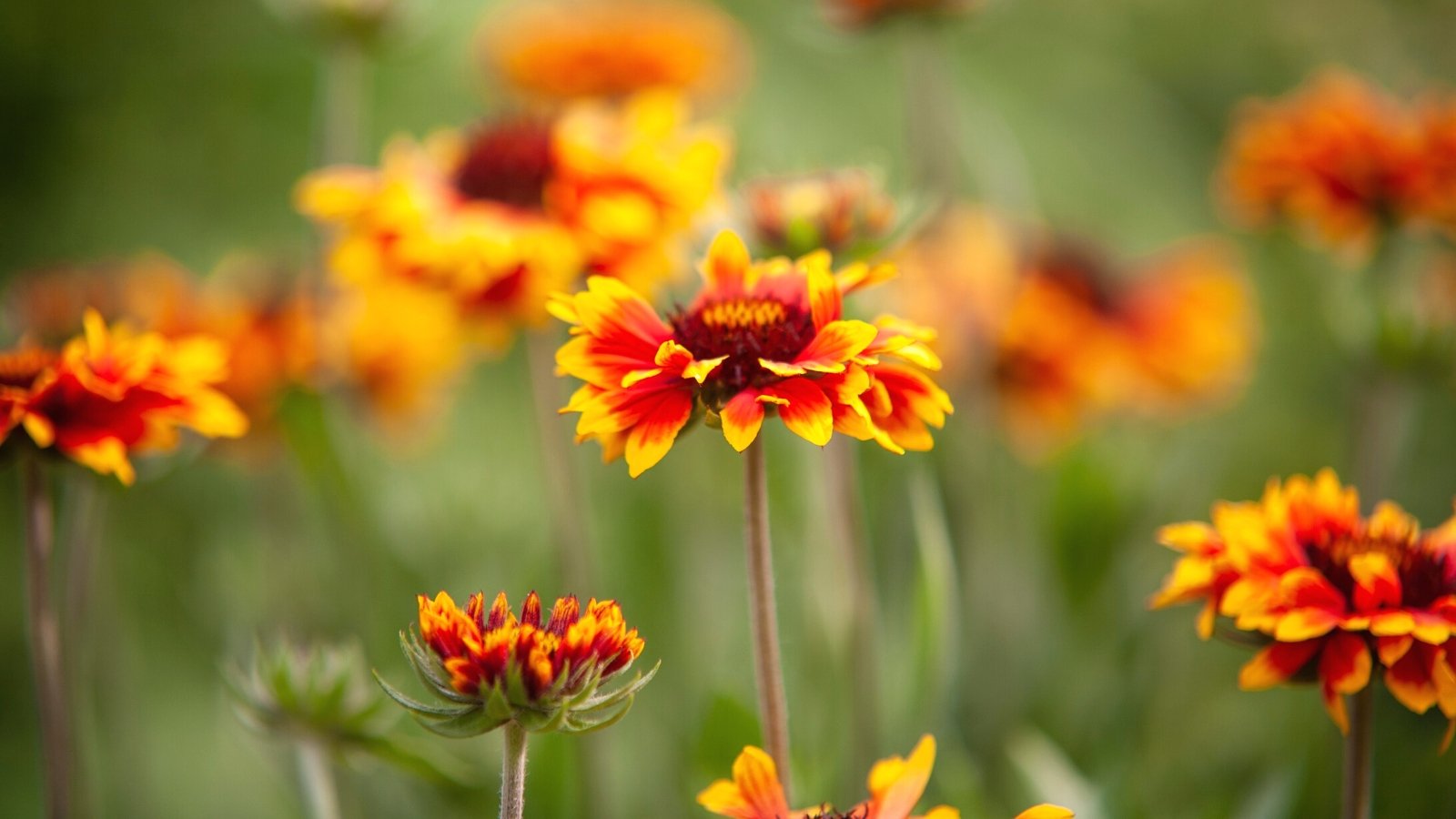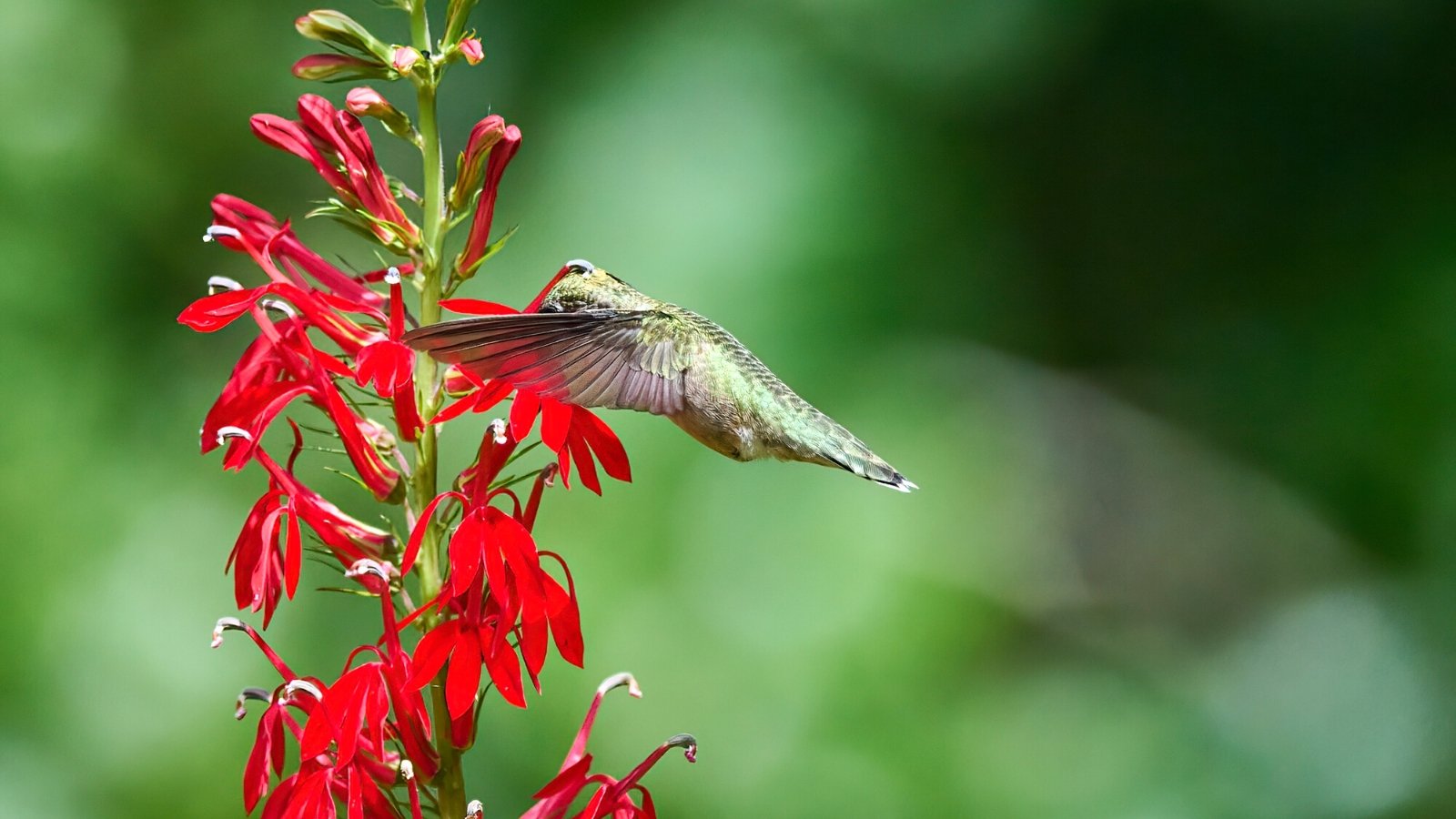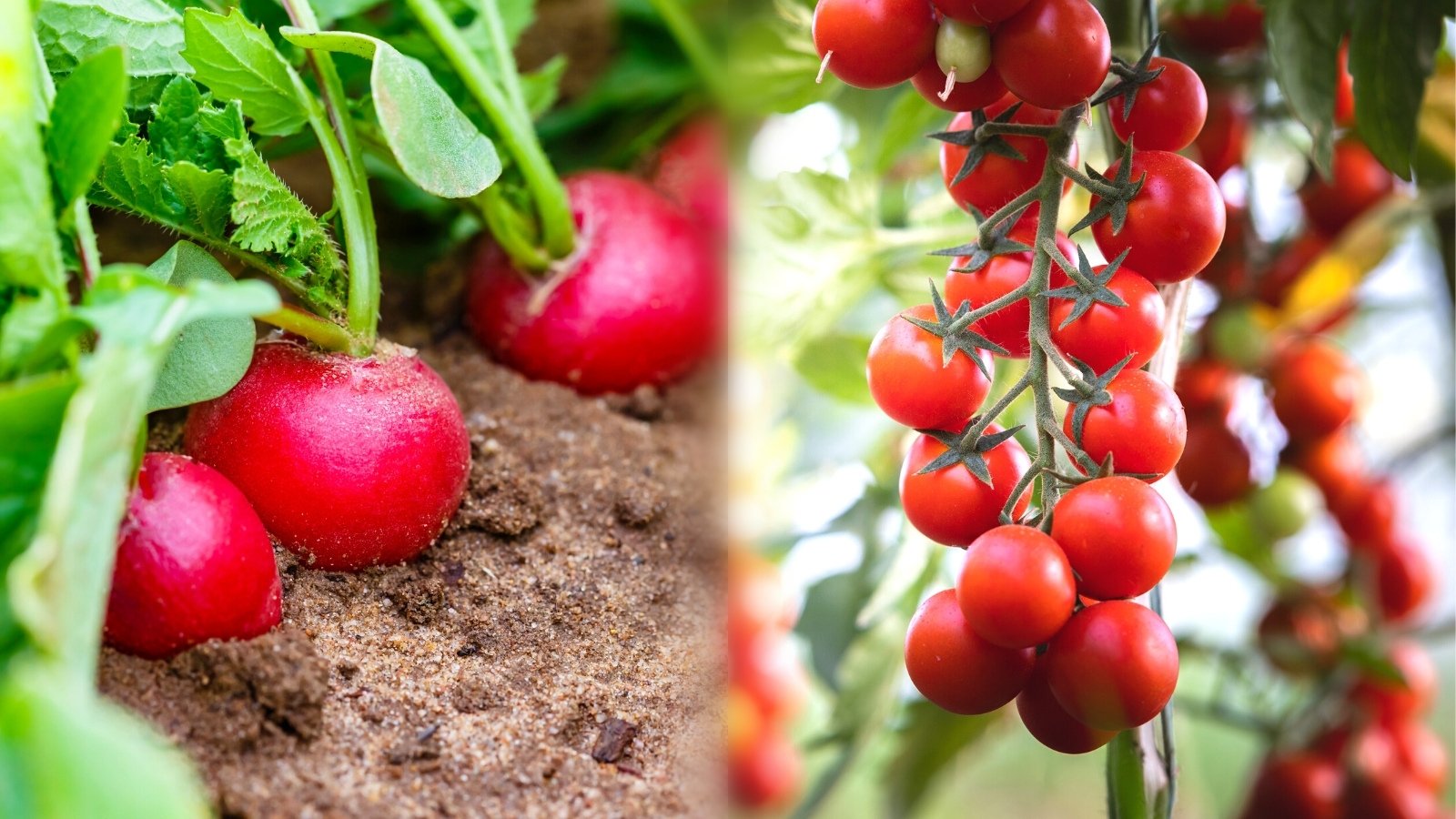There are countless winter squash varieties, but for brevity’s sake, we’ll discuss the most popular types of winter squash for the home gardener and cover a few interesting varieties of each type! Summer squash like zucchini may be more widely known and more commonly grown, but winter squashes are the unsung heroes of the Cucurbita family. Since they belong to the same family as plants like cucumbers, zucchini, and pattypan, they have similar growth habits and needs.
While summer squashes are meant to be eaten young and tender, these are meant to be left on the vine to fully mature. This gives them a longer shelf life and makes them excellent for longer-term storage. This is where the name winter squash comes from as they are grown through the summer just like summer squash, but they are generally stored for consumption throughout the winter.
When properly cured, some ripe winter squash can be stored for up to six months. Their seeds are large and germinate easily, which makes them a great choice for kids or beginner gardeners. It’s worth noting that members of the Cucurbita family readily cross-pollinate, which can affect the seeds for the following year.
Saving seeds that have potentially cross-pollinated can result in a toxic squash with higher-than-normal levels of cucurbitacins which can make you sick! So it’s best to grow them at a sufficient distance from one another if you plan on saving seeds. Otherwise, the seeds are completely edible and delicious when roasted!
Spaghetti Squash

The spaghetti squash is known for its yellow flesh, which can be pulled into strands with a fork when cooked – much like spaghetti. This yellow flesh is commonly used as a vegetable-based substitute for spaghetti, hence the name spaghetti squash. The cooked squash is equally delicious with the addition of just some butter, salt, and pepper.
Tivoli
This is an excellent option for gardeners with limited space since it is a bush type rather than a vine type and is suitable for container growing on a patio or deck. The large, oblong, yellow variety can weigh up to 4-5 lbs per squash.
Small Wonder
This variety produces small 2-3 lb squash, which is perfect for a single serving. They have a bright orange color, and compared to other yellow spaghetti squash, they have a higher level of beta carotene.
Sugaretti
This variety is yellow with green streaks and resembles Delicata squash. It is known for its nutty flavor. It is purported to have a higher resistance to powdery mildew. It has a sweet flesh and mild flavor.
Hasta La Pasta
This is a fast grower which reaches maturity in about 80 days, compared to most other winter squashes that take 90 days and above. The stringy flesh is perfect as a pasta substitute as the name would suggest.
Acorn Squash

Compared to other winter squash, the acorn has relatively thin skin and light orange flesh. Often acorn squash halves are roasted with butter, and sometimes they are dressed with sweet maple syrup or brown sugar.
Green Acorn Squash
This is the most common acorn squash, which can be found in most grocery stores, especially when it is in season during the fall. The acorn-shaped squash has deep ribs and dark green skin, and there is sweet orange flesh inside. It’s important to harvest these before they begin to turn orange otherwise, they can develop fibrous flesh.
Golden Acorn Squash
This squash has a golden orange rind and golden flesh. The taste is similar to green acorn, but the beautiful golden color can add visual interest to your savory dishes.
Carnival Squash
This squash is a cross between acorn and a sweet dumpling squash. It is shaped like acorn squash but with pale yellow skin and light green stripes.
Turban Squash

These winter squash varieties get their name because they look like a pumpkin wearing a turban. They have an overall pumpkin shape but with almost a smaller pumpkin protruding from the top. They are mostly used as unique Autumnal decorations. However, they are also edible.
Buttercup Squash
The buttercup squash is dark green with a light green “turban” protruding from the top. The orange flesh is somewhat dry, so it’s best to steam this squash or roast it with a sauce of maple syrup or butter and brown sugar. The buttercup squash can also be used as a substitute for pumpkin in soups, stews, and pumpkin pie.
Turk’s Turban
Similar in appearance to Buttercup squash, but comes in a variety of colors. Mainly used for decorative purposes, but it’s also delicious and edible with a classic pumpkin flavor.
Kabocha Squash

These squash are also known as Japanese pumpkins (kabocha is the Japanese word for squash). Kabocha squash is known for having an earthy flavor. In Japan, “kabocha” may refer to many different types of squash, but in the West, Kabocha has come to refer to specific types of winter squash.
Red Kabocha
As its name would suggest, this kabocha has a dark orange rind that is almost red in appearance. It has deep orange flesh and tastes like a cross between a pumpkin and sweet potatoes.
Green Kabocha
This is the most commonly known kabocha squash with its beautiful dark green rind with light green blotches and yellow-orange flesh. It has a thin skin which makes it easy to cook and eat with (no peeling required!).
Orange Kabocha
Similar in appearance to the above-mentioned kabocha but with a bright orange rind. It also has a thin, edible skin and a taste similar to sweet potato. They taste delicious when cubes and roasted with just a touch of olive oil, salt, and pepper.
Hubbard Squash

These squashes are said to be named after Bela Hubbard, who introduced the winter squash to a seed trader, who then named the plant after her. They are drier and denser than most squashes and have a buttery richness.
Blue Hubbard Squash
This blue variety actually has more of a grey-blue coloration and a large pear shape. Blue Hubbard is quickly gaining popularity amongst gardeners as a trap crop for squash bugs and other pests that would plague your summer squash. It is also edible itself and quite tasty.
Golden Hubbard Squash
This variety has the same pear shape as the blue hubbard squash but with red-orange warty skin. The flesh has a creamy texture when cooked.
Red Kuri
Red Kuri is a small teardrop-shaped mini Hubbard with an orange-red rind and pale orange flesh. The red Kuri also has an earthy flavor that’s somewhat nutty and is great roasted and eaten on its own.
Butternut Squash

Butternut squash is one of the most popular winter squash, and for good reason! It has bright orange flesh, an elongated shape, and a small seed cavity in the base. This sweet squash has a smooth texture, making wonderful winter soups and stews. As long as you know when to harvest butternut squash to maximize its flavor, you’ll do well with all of the varieties below!
Waltham Butternut Squash
The most common variety of butternut squash. This heirloom variety produces pale tan squash with vibrant orange flesh. They reach maturity in about 85 days, and this variety stores very well. If you’d like to try growing Waltham butternut squash from seed, we stock those in our online store.
Honeynut Squash
Honeynut is a miniature sweet potato-sized hybrid of butternut squash. It has a sweet flavor, sweeter than your standard butternut, and darker orange flesh.
Butter Boy Hybrid
Produces 2-3 pound squashes with pale orange skin and orange flesh. Ready to harvest in about 85 days.
Autumn Glow
Stocky, almost boxy-shaped squash with light yellow-orange skin. Fast growing and reaches maturity in about 80 days.
Delicata Squash

These are also known as sweet potato squash since they’re generally smaller and sweet potato-shaped.
Sugar Loaf
Stouter than standard Delicata squash, oblong and about 6 inches in length. It’s perfect for single servings and small snacks. As its name would suggest, it has a mild sweet taste.
Honey Boat
This winter squash has been described as the sweetest squash in existence and compared to eating a spoonful of honey! This makes it a great squash for baking desserts.
Bush Delicata
A bush-type variety of Delicata grows as a bush rather than a vine. A great option for small space gardeners.
Sweet Dumpling Squash
Has the same pale yellow skin with light green stripes as Delicata but in the shape of an acorn squash.
Pumpkins

For brevity’s sake, we’ll only discuss the most common varieties that one would think of when hearing the word “pumpkin” since there are over 90 varieties of pumpkin!
Sugar Pumpkin
The sugar pumpkin is mostly used as a pie pumpkin. Pie pumpkins have been bred for sweetness and not for size. They’re also smaller than the larger carving pumpkins. Generally, they are roasted, then pureed, and then used in baking. They’re excellent for canned pumpkin too. Try growing the sugar pie pumpkin seeds we stock in our online store.
Baby Bear
A mini variety that is 4-6 inches in diameter. Perfect for the small space gardener. Also sweet and can be used in baking, much like the sugar pumpkins.
Big Max
This giant pumpkin can grow to weigh up to 300 pounds! That’s one solid squash! They are commonly grown to enter pumpkin growing contests and are not meant to be edible. It takes about 125 days for it to reach full size.
Jack-o-Lantern
These pumpkins weigh around 12-18 pounds and are perfect for carving. Although they can also be eaten.
Unique Heirlooms

Lakota Squash
Pear-shaped with dark green stripes that closely resemble Hubbard squash. The hybrid Lakota squash took over a century to create! There are records of it being grown at Fort Atkinson in Nebraska in the 1820s.
Banana
These squash are cylindrical and can grow to be very large, weighing in at up to 35 pounds! The flesh is fragrant and has very few seeds, especially considering its large size.
Calabaza
Referred to as the West Indian pumpkin because of its popularity in the Caribbean. It is sweet, juicy, and robust.
Blue Hokkaido or Blue Kuri
Grey-blue skin with deep orange flesh. Has a deep nutty flavor. Also sometimes referred to as Blue Kabocha.
Decorative

These are popular squash for the fall and winter holidays. Thankfully, with this list, you won’t have to deal with too much orange that comes in the form of pumpkins.
Bottle Gourds
When left to dry on the vine, these gourds become hollow and, thus, can be used as bottles. They are also commonly used as a natural birdhouse.
Swan White
A stunning white pumpkin shaped like acorn squash. It is edible. However, it makes a great addition to fall arrangements by adding variety alongside other colors of yellow, green, orange, and blue winter squash.
Daisy
This squash looks similar to carnival squash, but when flipped upside down has a daisy-shaped pattern on the bottom. Adds a beautiful flower-shaped addition to your decorations.
Tennessee Dancing Gourd
Tiny handheld-sized dark green with light green streaks and standard bottle gourd shape. These make a great filler for your tabletop cornucopia.
Frequently Asked Questions
Q: What is the tastiest winter squash?
A: This is entirely subjective! That being said, butternut squash is the most popular edible winter squash, and a plethora of recipes exist utilizing it.
Q: What is the best winter squash to grow?
A: Again, entirely subjective and will depend on what you’d like to use it for. People buy winter squash to throw in soups, breads, and pies.
Q: What is the sweetest winter squash?
A: Honey boat is said to be the sweetest.
Q: How many winter squash varieties are there?
A: Over 150 squash varieties exist currently.
Q: Do all winter squash taste the same?
A: No, they have differences in taste and texture.
Q: Which winter squash lasts the longest?
A: If your goal is to store winter squash for the long term then Butternut is your best bet. Acorn has the shortest shelf life. If you’re storing it, check for soft spots before you cook.














